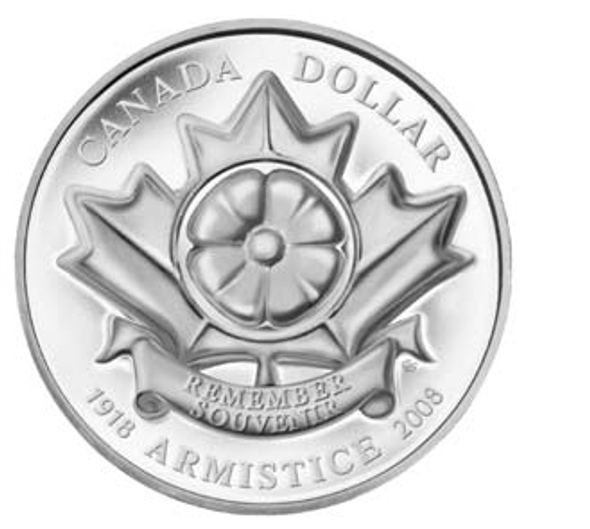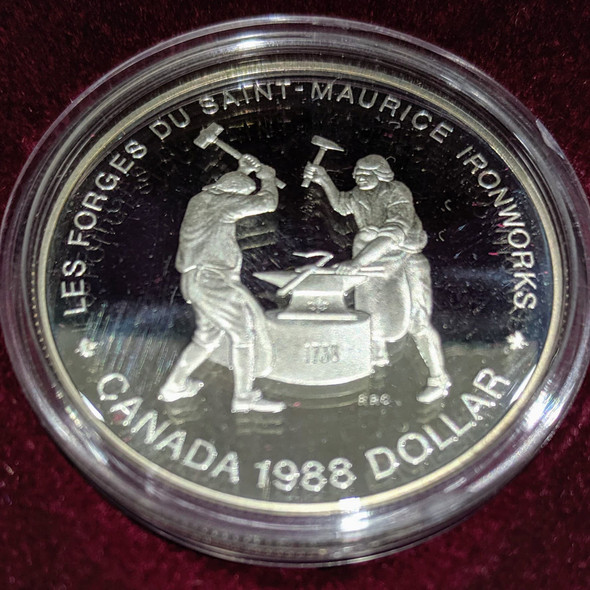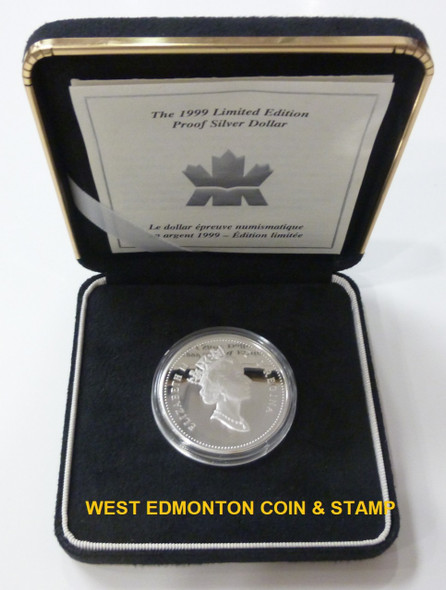Description
Theme:
Mapping the legacy of war.
Description:
This 1-dollar coin is certified to be 99.99% fine silver with a diameter of 36.07 millimetres and a metal content of 23.17 grams. Canadian artist Tony Bianco designed the reverse which features a montage of the peoples involved in, and affected by the Seven Years War—the British and French soldiers, the First Nations people and the colonists, particularly those residing on the eastern seaboard. The group gazes east, across the Atlantic Ocean towards the Old World while the child represents hope for the future. The map in the background shows the region where the conflict took place in North America and the banners and embellishments at the top and bottom of the coin echo the typographical styles of 17th- and 18th-century maps and official documents. The obverse features the effigy of Her Majesty Queen Elizabeth II by Susanna Blunt.
Special Features:
- Silver Dollar is struck in 99.99% Fine Silver –GST/HST exempt!
- This coin showcases five different coin finishes each with a separate degree of luster, exceptional engraving techniques.
- An excellent addition to any collection focused around history.
- 1 of only 3 proof silver dollar coins in Royal Canadian Mint’s product offerings.
Product Specifications:
Face Value: 1 dollar
Mintage: 10,000
Composition: 99.99% fine silver
Weight (g): 23.17
Diameter (mm): 36.07
Edge: Serrated
Finish: Proof
Certificate: Serialized
Artist: Tony Bianco
Advertising Date: April 2, 2013
Launch Date: April 9, 2013
Packaging:
Coin is encapsulated and presented in a Royal Canadian Mint-branded maroon clamshell case lined with black flock and protected by a customized beauty box.
Finished Size: 67 x 67 mm
Complete Certificate Text:
Mapping the legacy of war
250th anniversary of the end of the Seven Years War (1756 – 1763)
The map of North America is a veritable history book on the societal evolution of the continent. With place-names that can be traced to a multitude of European and Aboriginal cultures, it reveals the diversity of people who played a role in this epic tale that spanned centuries—the French, British, Spanish, Portuguese, Dutch, Swedish, Danish and First Nation peoples.
But it was the three super powers of the age that yielded the greatest influence on the map’s formation. After warring for centuries for domination in Europe, they set their sights on North America. Spain colonized the continent from the South, the British along the Atlantic Coast and the French expanded inland via the St. Lawrence Valley and the eastern seaboard.
As ships crossed the Atlantic Ocean, they had more than sailors, soldiers and guns on board. They also carried merchants, farmers, fishers, peasant families and adventurous traders all eager to enjoy the freedom and prosperity the New World offered. Yet, as they toiled to build new lives, they did so against an undercurrent of hostility between their homelands and the constant threat of war.
By the 18th century, the conflict was primarily between Britain and France—and it intensified with far-reaching, grasping arms. The early colonists who were primarily concerned with harvesting a livelihood from the land and sea were invariably drawn into the conflict, as were First Nations people who had long-standing alliances with the Europeans, but were equally interested in protecting their own interests.
After two years, the struggle reached a breaking point when open warfare broke out in the Ohio Valley. Britain officially declared war on France one year later in 1756, and the war that ensued became one of history’s greatest wars since the fall of the Roman Empire. The Seven Years War was the world’s first global conflict extending far beyond North America to Europe, India and Africa.
In North America, the English colonies along the eastern seaboard, and the French forts extending from the St. Lawrence River to the Great Lakes and south beyond the Ohio Valley, determined how the war would be fought as the opponents struggled to control each stronghold. When the conflict ended in 1763, the lives of North America’s early citizens changed forever as new boundaries were drawn up. Yet, the foundation was laid for Canada as the world knows it today—the lands that define the nation, as well as the linguistic and cultural diversity of its people.
















